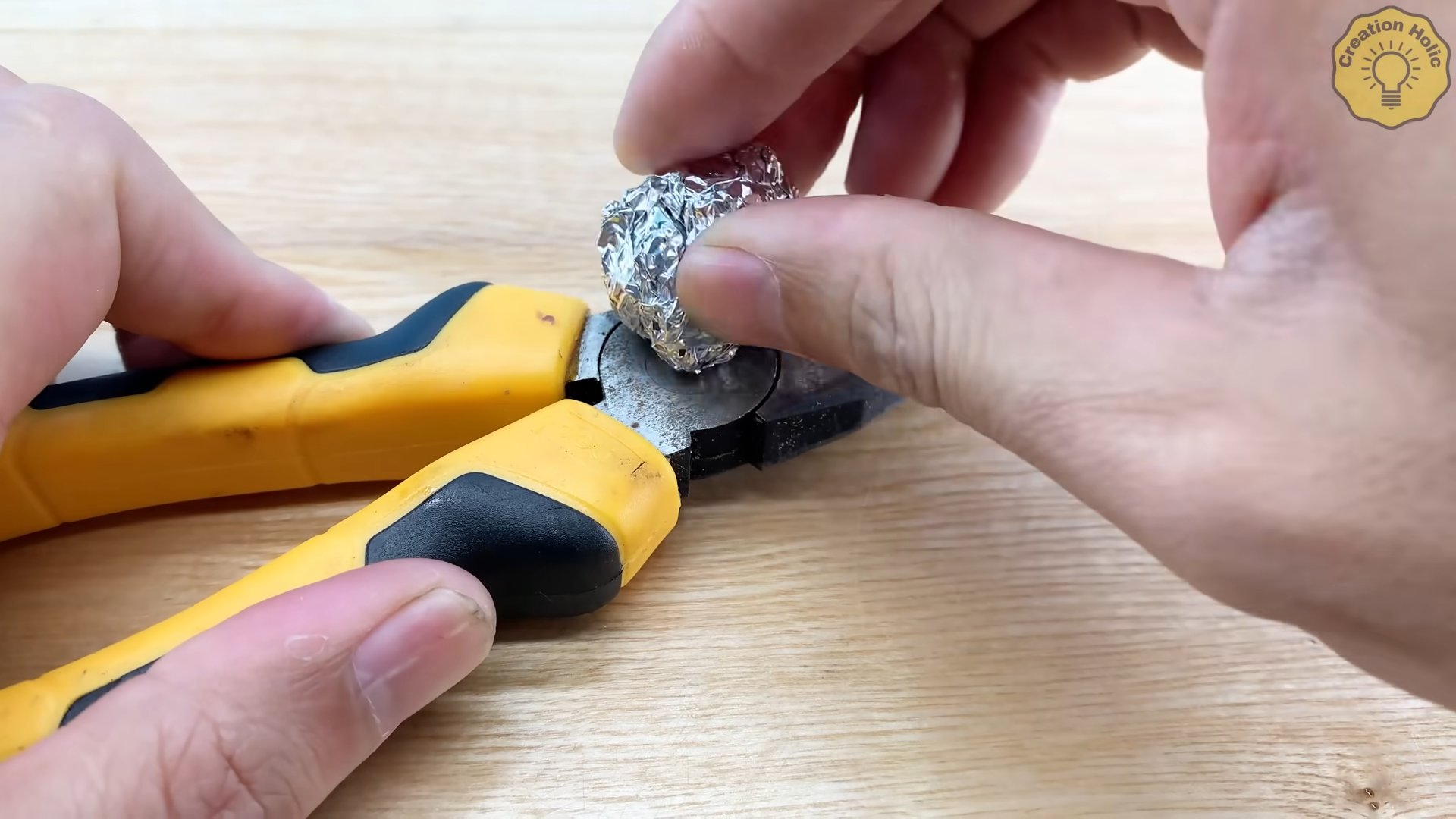Time-saving hacks are a gardener’s best friend, aren’t they? Imagine spending less time toiling away in the garden and more time actually enjoying the fruits (and vegetables!) of your labor. That’s the promise of these clever DIY tricks, and I’m so excited to share some of my favorites with you!
Gardening, in its essence, has always been about efficiency. From ancient irrigation systems to the three-sisters planting method used by indigenous cultures, people have constantly sought ways to maximize yields with minimal effort. These aren’t just modern conveniences; they’re a continuation of a long and resourceful tradition.
Let’s face it, life is busy! We all want a beautiful, thriving garden, but who has hours to dedicate to weeding, watering, and fertilizing every single day? That’s where these time-saving hacks come in. They’re designed to streamline your gardening routine, allowing you to achieve impressive results without sacrificing your precious free time. I’m going to show you how to reclaim your weekends and still have the envy-worthy garden you’ve always dreamed of. Get ready to discover some game-changing DIY solutions that will transform the way you garden!

DIY Time-Saving Hacks: Reclaim Your Day!
Okay, let’s face it, time is precious! And who doesn’t want a few extra minutes (or even hours!) in their day? I’ve compiled some of my favorite DIY time-saving hacks that have seriously changed my life. These are all relatively simple to implement, and trust me, the payoff is huge. Let’s dive in!
Meal Prep Like a Pro
Meal prepping is a game-changer. It might seem daunting at first, but once you get into the rhythm, you’ll wonder how you ever lived without it. This isn’t just about bland chicken and broccoli (unless that’s your thing!). It’s about having healthy, delicious meals ready to go, so you’re not scrambling at the last minute.
Getting Started with Meal Prep
* Plan Your Meals: This is the most crucial step. Sit down and decide what you want to eat for the week. Consider your schedule and any dietary restrictions. I like to use a simple spreadsheet or even just a notebook to jot down my ideas.
* Create a Shopping List: Once you have your meal plan, create a detailed shopping list. This will prevent impulse buys and ensure you have everything you need.
* Choose a Prep Day: Dedicate a few hours on a weekend or evening to prep your meals. Sunday is my go-to day, but find what works best for you.
* Invest in Good Containers: Airtight containers are essential for keeping your food fresh. I prefer glass containers, but BPA-free plastic works too. Make sure you have a variety of sizes to accommodate different meals.
Step-by-Step Meal Prep Guide
1. Cook Your Grains: Start by cooking your grains, such as rice, quinoa, or pasta. These can take a while to cook, so getting them out of the way first is a good idea. I usually use a rice cooker for convenience.
2. Roast Your Vegetables: Roasting vegetables is a great way to add flavor and nutrients to your meals. Chop your veggies (broccoli, carrots, sweet potatoes, etc.), toss them with olive oil, salt, and pepper, and roast them in the oven until tender.
3. Cook Your Protein: Next, cook your protein source. This could be chicken, fish, tofu, or beans. I often bake a large batch of chicken breasts or grill some salmon.
4. Assemble Your Meals: Now comes the fun part! Divide your cooked ingredients into your containers. I like to create balanced meals with a protein, a grain, and a vegetable.
5. Store Your Meals: Store your prepared meals in the refrigerator. Most meals will stay fresh for 3-5 days. If you’re prepping for longer than that, consider freezing some meals.
Streamline Your Morning Routine
Mornings can be chaotic, but with a little planning, you can create a smooth and stress-free routine.
Preparing the Night Before
* Lay Out Your Clothes: Choose your outfit the night before to avoid decision fatigue in the morning. This includes shoes, accessories, and even your coat.
* Pack Your Lunch: Pack your lunch and snacks the night before. This will save you time and prevent you from grabbing unhealthy options.
* Prepare Your Breakfast: If you eat breakfast at home, prepare as much as possible the night before. This could be overnight oats, a smoothie pack, or even just setting out your cereal bowl and spoon.
* Gather Your Essentials: Gather your keys, wallet, phone, and any other essentials you need for the day and place them in a designated spot.
Creating a Morning Checklist
1. Wake Up at the Same Time Every Day: Consistency is key. Even on weekends, try to wake up around the same time to regulate your body’s natural rhythm.
2. Make Your Bed: This simple task starts your day off with a sense of accomplishment.
3. Hydrate: Drink a glass of water as soon as you wake up to rehydrate your body.
4. Do a Quick Tidy: Take a few minutes to tidy up your living space. This will create a more peaceful and organized environment.
5. Review Your Schedule: Take a quick look at your schedule for the day to stay on track.
Master the Art of Batching
Batching is grouping similar tasks together to maximize efficiency. This reduces context switching and allows you to focus on one type of task at a time.
Identifying Batchable Tasks
* Emails: Instead of checking your email constantly throughout the day, set aside specific times to respond to emails.
* Errands: Group your errands together and run them all at once. This will save you time and gas.
* Phone Calls: Make all your phone calls at the same time.
* Social Media: Limit your social media time and batch it into specific blocks.
Implementing Batching
1. Identify Your Batchable Tasks: Make a list of tasks that you can group together.
2. Schedule Your Batches: Schedule specific times for each batch of tasks.
3. Focus on One Batch at a Time: When you’re working on a batch, focus solely on those tasks. Avoid distractions and interruptions.
4. Evaluate and Adjust: Regularly evaluate your batching system and make adjustments as needed.
Declutter Your Life
Clutter can be a major time-waster. It takes time to find things, and it can also be mentally draining. Decluttering your home and workspace can free up time and reduce stress.
Decluttering Strategies
* The 20-Minute Rule: Spend 20 minutes each day decluttering one area of your home.
* The One-In, One-Out Rule: For every new item you bring into your home, get rid of one old item.
* The KonMari Method: Go through your belongings category by category and keep only the items that “spark joy.”
* Donate or Sell Unwanted Items: Don’t let your unwanted items sit around collecting dust. Donate them to charity or sell them online.
Step-by-Step Decluttering Guide
1. Choose an Area to Declutter: Start with a small area, such as a drawer or a shelf.
2. Remove Everything: Take everything out of the area you’re decluttering.
3. Sort Your Belongings: Sort your belongings into categories: keep, donate/sell, and trash.
4. Clean the Area: Clean the area you’re decluttering before putting anything back.
5. Put Back Only What You Need: Put back only the items you need and use regularly.
6. Donate or Sell Unwanted Items: Take your unwanted items to a donation center or list them for sale online.
Automate Repetitive Tasks
Automation can save you a ton of time by taking care of repetitive tasks automatically.
Automation Tools and Techniques
* Email Filters: Use email filters to automatically sort and organize your emails.
* Bill Pay: Set up automatic bill payments to avoid late fees and save time.
* Social Media Scheduling: Use social media scheduling tools to schedule your posts in advance.
* IFTTT (If This Then That): Use IFTTT to automate tasks between different apps and services.
Setting Up Automation
1. Identify Repetitive Tasks: Make a list of tasks that you do regularly and that could be automated.
2. Choose the Right Tools: Research and choose the right tools for automating your tasks.
3. Set Up Your Automations: Follow the instructions for setting up your automations.
4. Test Your Automations: Test your automations to make sure they’re working correctly.
5. Monitor and Adjust: Monitor your automations and make adjustments as needed.
Embrace the Power of “No”
Learning to say “no” is essential for protecting your time and energy. Don’t be afraid to decline requests that don’t align with your priorities.
Setting Boundaries
* Identify Your Priorities: Know what’s important to you and what you want to spend your time on.
* Be Assertive: Clearly and respectfully decline requests that don’t align with your priorities.
* Offer Alternatives: If possible, offer alternatives to the person making the request.
* Don’t Overexplain: You don’t need to provide a lengthy explanation for saying “no.” A simple “I’m not able to commit to that right now” is often sufficient.
Practicing Saying “No”
1. Start Small: Practice saying “no” to small requests first.
2. Be Direct: Use clear and direct language.
3. Be Polite: Be polite but firm.

Conclusion
So, there you have it! This simple yet incredibly effective DIY trick is more than just a time-saving hack; it’s a game-changer for anyone looking to streamline their daily routine and reclaim precious minutes (or even hours!) each week. We’ve all been there – staring into a chaotic pantry, rummaging through a disorganized drawer, or feeling overwhelmed by a never-ending to-do list. This method offers a tangible solution, a way to inject order and efficiency into the everyday chaos.
The beauty of this particular time-saving hack lies in its adaptability. While we’ve presented a specific application, the underlying principles can be applied to countless areas of your life. Think about it: could you use this approach to organize your digital files? What about meal prepping for the week? Or perhaps even decluttering your closet? The possibilities are truly endless.
Consider these variations to personalize the technique to your specific needs:
* Batching Similar Tasks: Instead of tackling individual tasks sporadically throughout the day, group similar activities together. For example, dedicate a specific block of time to answering emails, making phone calls, or running errands. This minimizes context switching and allows you to enter a state of flow, boosting productivity.
* The Two-Minute Rule: If a task takes less than two minutes to complete, do it immediately. This prevents small tasks from accumulating and becoming overwhelming. Think of it as a preemptive strike against procrastination.
* Automating Repetitive Processes: Explore tools and apps that can automate tasks you perform regularly. This could involve setting up automatic bill payments, using a password manager, or scheduling social media posts.
* Delegating When Possible: Don’t be afraid to ask for help! If you have the option to delegate tasks to others, whether it’s at work or at home, take advantage of it. This frees up your time to focus on higher-priority activities.
Ultimately, the goal is to find what works best for you. Experiment with different techniques, track your progress, and adjust your approach as needed. The key is to be consistent and to make time-saving a conscious priority.
We are confident that incorporating this DIY trick into your life will yield significant benefits. Not only will you save time, but you’ll also reduce stress, increase productivity, and gain a greater sense of control over your day.
So, what are you waiting for? Give this time-saving hack a try and see for yourself the difference it can make. We encourage you to share your experiences in the comments below. Let us know how you’ve adapted the technique to your specific needs, what challenges you’ve encountered, and what successes you’ve achieved. Your insights could inspire others to embrace a more efficient and fulfilling lifestyle. We are eager to hear your stories and learn from your experiences! Let’s all work together to make the most of our time.
Frequently Asked Questions (FAQ)
Q: How long does it typically take to see results from implementing this time-saving hack?
A: The timeframe for seeing results can vary depending on the specific application of the hack and your individual circumstances. However, many people report noticing a positive impact within just a few days or weeks of consistent implementation. The key is to be patient and persistent. Start with small, manageable changes and gradually build upon your progress. Track your time savings and productivity levels to monitor your improvement and stay motivated. Remember that even small gains can add up to significant benefits over time.
Q: What if I find it difficult to stick to the new routine?
A: It’s perfectly normal to experience challenges when adopting a new routine. The key is to be kind to yourself and avoid getting discouraged by setbacks. Start by setting realistic goals and breaking down the process into smaller, more manageable steps. Create reminders and visual cues to help you stay on track. Find an accountability partner who can provide support and encouragement. Reward yourself for achieving milestones. And most importantly, don’t give up! Even if you slip up occasionally, simply get back on track as soon as possible. Remember that consistency is key to long-term success.
Q: Can this time-saving hack be applied to both personal and professional life?
A: Absolutely! The principles of this time-saving hack are universally applicable to both personal and professional settings. Whether you’re trying to streamline your household chores, manage your work projects more efficiently, or simply free up more time for leisure activities, this technique can help you achieve your goals. The key is to identify areas where you’re currently wasting time and then apply the principles of organization, prioritization, and automation to those areas. Remember to tailor your approach to your specific needs and circumstances.
Q: What are some common pitfalls to avoid when implementing this time-saving hack?
A: There are a few common pitfalls to watch out for when implementing this time-saving hack. One is trying to do too much too soon. It’s important to start small and gradually build upon your progress. Another pitfall is failing to prioritize tasks effectively. Make sure you’re focusing on the most important and urgent tasks first. A third pitfall is neglecting to track your progress. Monitoring your time savings and productivity levels can help you stay motivated and identify areas where you need to make adjustments. Finally, don’t be afraid to experiment and adapt the technique to your specific needs. What works for one person may not work for another.
Q: What if I don’t have access to fancy tools or software? Can I still use this time-saving hack?
A: Absolutely! This time-saving hack is designed to be accessible to everyone, regardless of their access to fancy tools or software. While certain tools can certainly enhance the process, they are not essential. You can achieve significant results simply by applying the core principles of organization, prioritization, and automation using basic tools like a pen and paper, a calendar, or a simple to-do list app. The key is to focus on the underlying principles and adapt them to your available resources. Don’t let a lack of fancy tools hold you back from improving your time management skills.
Q: How can I encourage my family or colleagues to adopt this time-saving hack?
A: Encouraging others to adopt this time-saving hack can be a challenge, but it’s definitely possible. Start by leading by example. Demonstrate the benefits of the technique through your own actions and results. Share your experiences and successes with others. Explain how the hack has helped you save time, reduce stress, and increase productivity. Be patient and understanding. Not everyone will be immediately receptive to the idea. Focus on highlighting the benefits that are most relevant to their individual needs and circumstances. Offer support and guidance as they begin to implement the technique. And most importantly, create a positive and collaborative environment where everyone feels comfortable sharing their experiences and learning from each other.
Q: Is this time-saving hack a one-time fix, or does it require ongoing maintenance?
A: This time-saving hack is not a one-time fix; it requires ongoing maintenance and adaptation. Time management is an ongoing process, not a destination. As your circumstances change, you’ll need to adjust your approach accordingly. Regularly review your systems and processes to identify areas where you can improve. Stay up-to-date on new tools and techniques that can help you save time. And most importantly, make time management a conscious priority in your daily life. By consistently maintaining and adapting your approach, you can ensure that you continue to reap the benefits of this time-saving hack for years to come.




Leave a Comment